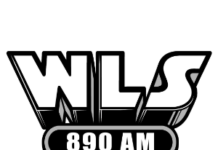
Nick Martin is the CEO of Big River Broadcasting. In addition to running his Alabama radio stations, Nick is very involved in the industry. He’s on the NAB Radio Board. He wants the industry to remain strong and vibrant and takes every opportunity to push radio in that direction. We asked Nick about the recent Jacobs Media study that showed radio’s listenership has been declining for years. Here’s what he had to say.
“Before we start kicking radio out the door, let’s take a look at some very interesting facts that were released during the Small/Medium Market Radio Forum at the NAB show recently. This is fresh data that was presented by Pierre Bouvard, Chief Insights Officer with Cumulus Media/Westwood One. The research includes Nielsen data and has been published publicly.
“We all know that the pandemic changed things in so many ways. No argument there. In -car listening has always been a major factor with listenership. Folks started working from home and those numbers declined. Now that we are coming out of this, 86% of pre-covid commuters are now working OUTSIDE THE HOME and back on the road. Give it a few months and let’s see how the data trends. In addition, Fall 2021 listening vs Fall 2019 listening shows that AM/FM Radio retained 98% of persons 18+ and 97% of persons 25-54. Seems like those are pretty strong numbers?
“Can radio improve the listening experience for consumers…absolutely! We should do everything we can to improve the experience and interaction in the dash, app, computer, or wherever the product is consumed. This will help radio compete in that space with digital competition.
“Bluetooth overtaking radio in the car? I don’t necessarily see this as a bad thing. We’ve preached this to our team for a long time. Originally, streaming helped us level the playing field with satellite radio by expanding our coverage area. Now, a listener can get in the car, connect with bluetooth and listen to our stations for the 5 hour drive to the beach!!! How is that a bad thing? I’ll take 5 hours of TSL from a listener. Were this not available, 65 miles down the road they are looking for something else to listen to. Technology is what is making this possible. You have to have your product available for the consumer however they wish to consume it. Our on air listening numbers are still strong, #1 and #2 in the market, and our streaming numbers have significantly increased over the last couple of years. We know consumption habits are changing, but you have to adapt with them.
“New music discovery? We don’t follow a corporate playlist and are not afraid to play new, good music. I do think it’s good for artists and your audience to be exposed to new music. If it’s good, play it. I know the record labels are in love with the way DSP’s can work music faster for artists, but RADIO STILL GETS RESULTS!
“There’s no doubt that listening habits are different in larger markets and smaller markets. But, the largest markets can take this out of the small market playbook. Be live, local and connect with your community and audience…it works.”
Nick Martin
Chief Operating Officer
Big River Broadcasting
[email protected]
Our Series on Radio’s declining Listenership
Day One
Day Two
Day Three






Why not talk with 20 and 30 year olds about why they don’t listen to the radio any longer.
We have.
Here are their answers.
1. Same 10 songs over and over
2. Way to many commercials
3. Way to much talk back and forth between hosts
4. Radio is dull / boring /
5. Where are the fun times of radio remotes and great local contests?
If you ask….your customers or former customers (listeners) will tell you.
Yes, and those retention numbers that Nick cites feel like spin to me. In other words, tailored to make that issue seem as minor as possible. It is not, it is an existential threat to the medium. Younger audiences are literally not in the habit of listening to terrestrial radio in the way that they once did. And you’re spot on with respect to why.
Degradation of Class B AM stations to class D (low power non directional night). Can’t hear the station, listeners tune out. Some owners care more about acquiring more stations than fixing the ones they have (“toilet licensees”, one pull of the handle and they flush). Obvious low cost or automated or satellite programming which can be heard at multiple locations on the dial simultaneously with little or no listener appeal.
It seems that non-broadcasters are purchasing terrestrial radio. Leadership is getting weaker. Very little Local involvement with the town’s listeners that the station is licensed. The Local population is not even aware of the radio station other than; there is tower over there somewhere. Radio is not a hobby. Until the FCC requires a broadcast, background to own and operate one it will continue to slip into darkness. Too much, satellite programing and not enough local involvement. No one is at the radio station to answer the phone and to make a listener feel involved. It is so simple. If you are a seasoned broadcaster, I am sure you understand.
From small to medium to large markets time to get with it .